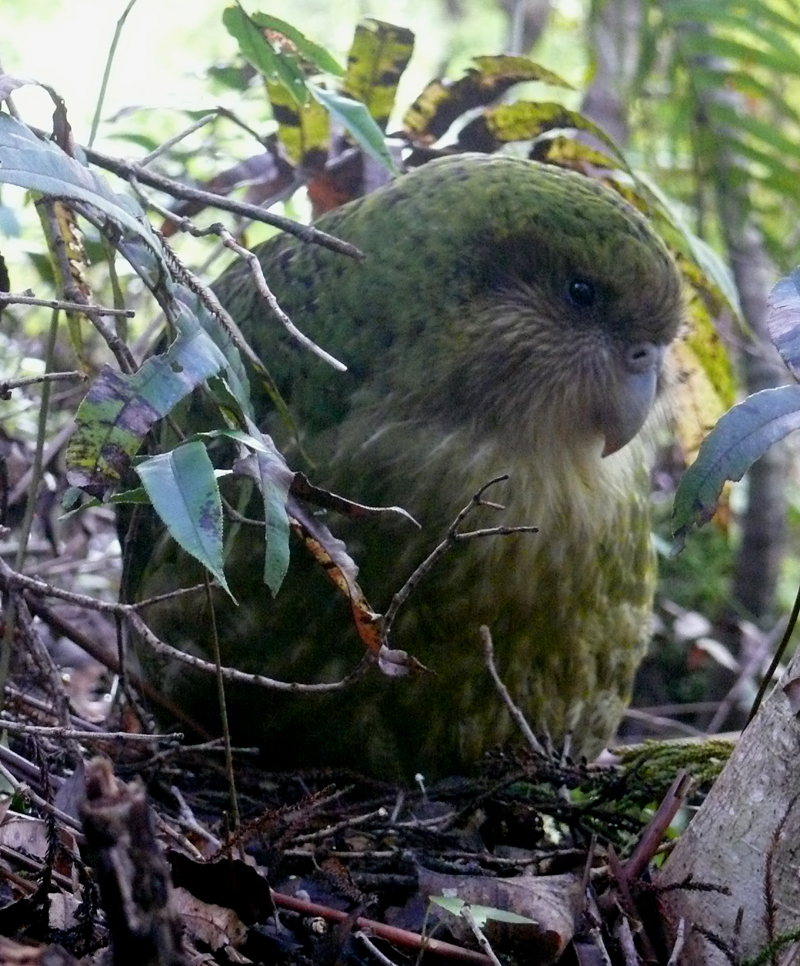Kai-to-go for Kakapo Part II
Guest blogger: Kakapo feeder, Stephanie Gray
Beginning with a hot-pink sunrise over Stewart Island’s Raggedy Ranges, my fifth day on Whenua Hou wrapped up beautifully with a game of petanque on Sealers’ Bay.

Sinbad, Photo: Stephanie Gray
In true island-style, we bowled over and around heaps of glossy kelp, skipped the jack to the creek’s edge, and considered the variable speed of steel through sand.
My feed-out route today took me southwest of the valley, through a verdant canopy of miro, kahikatea and rimu rustling with bellbirds, tomtits and ever-present kakariki. Having found my mud-legs by now, the climb is easy and sweet in the sunshine.
I find Heather’s feed station in a pool of dappled light, and laugh aloud at the state of it. Her water hopper has been ripped off the stand, and the snark (a receiver that collects information on the birds’ comings and goings) kicked to one side and chewed.
Heather’s food hopper is empty, and the information I download from the snark to a hand-held data-logger tells me that she and another bird (with a different number) have been back and forth throughout the night. So she’s not solely to blame.
All stations on my route today are due to be relocated a little further down the track, and I’m careful to whack the stakes firmly into the ground now that I know Heather’s mettle.
Compared to Heather’s station, Sinbad’s is low-tech. His hopper stays unlocked, and he can be trusted with a dog-bowl of water. I’m quick to clean up, but noisy enough to attract his attention and, like my visit several days earlier, Sinbad pushes his feathered face through the ferns to investigate.
Watching him watching me, I think just how good it is to see kakapo thrive in the wild. I’ve met these birds before, but only in the care of vets at Massey’s Wildlife Ward. Weakened with respiratory infection and injury, the birds seemed smaller, but their musky-sweet fragrance still over-rode that of antiseptic solution.
The birds on Whenua Hou benefit from their run of an island that is essentially one large kakapo garden, lush with the plants these herbivores enjoy. In the chick pen, the last two juveniles to be released are offered a daily selection of browse—creamy, starchy mingi-mingi berries, succulent flax ends, and the tender hearts of the tough waxy, Oleria shrub – Teteaweka.
Above all, the kakapo of Codfish Island thrive with the TLC and technical know-how of the Kakapo Programme Officers. The team apply determination and skill to an expanding body of scientific literature, ceaselessly and within the confines of an island. As a volunteer I am thrilled to be involved and send my thanks to Wellington Zoo for sending me here to help.
